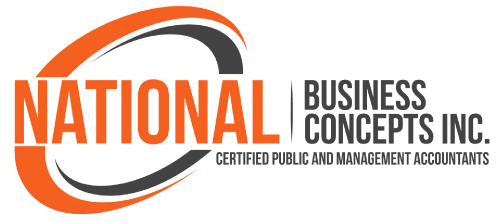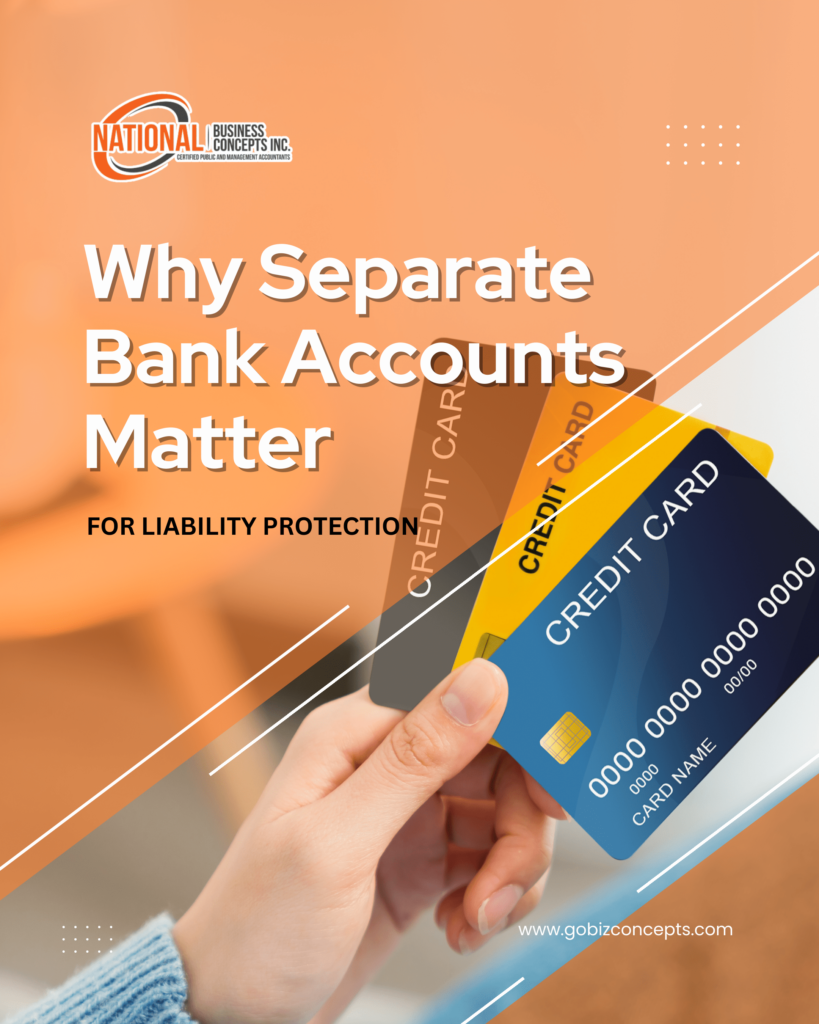Separate Bank Accounts For Personal Liability Protection
For any business structure other than sole proprietorship and general partnership, separate bank accounts offer some personal liability protection. For sole proprietorship and general partnership, separate bank accounts offer no protection, and for other structures with board oversight, it does not offer protection for failing to carry out governance responsibilities.
Limited Liability Entities: Liabilities From Operations
Maintaining a separate bank account for a limited liability entity is a foundational safeguard that reinforces the legal separation between the business and its owners or members. Note, for such an arrangement, an employer identification number (EIN) is essential. This separation is critical to preserving the liability shield that protects personal assets from business debts, lawsuits, and obligations arising from operations. When a business owner commingles personal and business funds—such as using a single account for both—it undermines the integrity of the entity and increases the risk that courts will “pierce the corporate veil.” This legal action allows creditors or litigants to hold the owner personally liable, effectively nullifying the limited liability protection. A dedicated business account demonstrates that the entity operates independently, adheres to formalities, and respects its own financial boundaries. It also simplifies accounting, tax reporting, and audit trails, which are essential for regulatory compliance and defence against claims of misconduct or fraud. In multi-member LLCs or corporations, separate accounts also help clarify ownership interests, distributions, and fiduciary responsibilities.
Boards of Corporate Bodies: Liabilities From Poor Governance
For board members of a corporation, maintaining a separate bank account for the entity is a critical safeguard that reinforces the legal and financial boundaries between the corporation and its directors. Liability protection for board members is diminished from poor governance or processes, i.e., when they fail to uphold their fiduciary duties or act outside the scope of their authority. Courts may pierce the corporate veil or hold directors personally liable if they engage in fraud, self-dealing, gross negligence, or wilful misconduct. Ignoring red flags, failing to supervise executive actions, or approving illegal transactions can trigger personal exposure. Directors who breach the duty of loyalty—such as by concealing conflicts of interest or misusing corporate opportunities—risk losing indemnification and insurance coverage. Similarly, violating the duty of care by making uninformed decisions or neglecting oversight responsibilities can erode protection. In regulated sectors, noncompliance with statutory obligations—like tax, employment, or environmental laws—may also lead to personal liability. Ultimately, protection is conditional: it depends on directors acting in good faith, with diligence, and within legal boundaries. When governance breaks down, the shield of limited liability can quickly collapse.
Sole Proprietorship and General Partnerships: Liabilities From Bad Outcomes
For a sole proprietor, maintaining a separate bank account do not create legal liability protection in the way it does for limited liability entities. An owner is liable for general operations with bad outcomes and bad processes. However, it offers practical safeguards that can reduce exposure to certain risks. By separating personal and business finances, the owner creates clearer records that support accurate tax reporting, expense tracking, and audit defence. This separation can also help demonstrate responsible financial management, which may reduce scrutiny from regulators or creditors. While the sole proprietor remains personally liable for all business debts and obligations—meaning personal assets are always at risk—a dedicated business account can help avoid confusion, prevent accidental commingling, and support the legitimacy of business operations. In disputes or investigations, clean financial boundaries may mitigate allegations of fraud or negligence. Though it doesn’t shield the owner from liability, a separate account is a strategic tool that reinforces discipline, transparency, and operational credibility in a high-exposure structure.
Courts and Investigative Bodies
Attempts to conceal accounts does not offer protection. Courts and investigative bodies have extensive tools to uncover hidden accounts, especially when financial misconduct, asset concealment, or fraud is suspected. Through subpoenas, forensic audits, and digital forensics, they can access banking records, email communications, and metadata that reveal undisclosed financial activity. Institutions like tax authorities, anti-money laundering units, and financial intelligence centres often collaborate across borders to trace offshore accounts and nominee arrangements. Lifestyle audits further expose discrepancies between reported income and actual spending, prompting deeper scrutiny. Investigators also leverage third-party disclosures—such as transaction records from banks, crypto exchanges, and payment platforms—to reconstruct asset flows. When legal entities are used to obscure ownership, courts may pierce the corporate veil or invoke beneficial ownership laws to identify the true controller. Ultimately, concealment strategies are vulnerable to systematic inquiry, especially when digital footprints, inconsistent documentation, or behavioural red flags emerge. The more complex the structure, the more forensic pressure it attracts.
To assists a court or for their own investigations the Internal Revenue Service (IRS) can trace tax evasion and financial fraud; the Securities Exchange Commission (SEC) and Commodity Futures Trading Commission (CFTC) can investigate securities and commodities fraud; Financial Crimes Enforcement Network (FinCEN) can monitor financial transactions for money laundering and terrorism financing; and the Federal Bureau of Investigation (FBI) and Drug Enforcement Administration (DEA) can investigate criminal enterprises and seize related assets.
Enabling laws
Courts and investigative bodies rely on a network of laws to uncover hidden accounts, particularly in cases involving fraud, tax evasion, or asset concealment. In the United States, statutes like the Bank Secrecy Act and the Foreign Account Tax Compliance Act (FATCA) compel financial institutions to report suspicious activity and disclose foreign-held assets. The Internal Revenue Code empowers the IRS to audit and subpoena financial records, while the Racketeer Influenced and Corrupt Organizations Act (RICO) allows asset tracing in organized crime cases. Civil and criminal procedure rules authorize subpoenas, depositions, and forensic audits to compel disclosure. Globally, treaties like the UN Convention Against Corruption and FATF standards facilitate cross-border cooperation and beneficial ownership transparency. These laws enable investigators to pierce corporate veils, access encrypted data, and trace digital transactions. When combined with forensic tools and lifestyle audits, they form a powerful framework for exposing hidden financial activity and recovering concealed assets.
Conclusions
Maintaining a separate bank account is a critical safeguard that reinforces the legal and financial boundaries between a business and its owners or board members. For limited liability entities, it helps preserve the liability shield that protects personal assets from business obligations. Board members risk personal exposure if financial governance is poor or fiduciary duties are breached. While sole proprietors and general partnerships do not gain legal protection from separate accounts, financial segregation still supports transparency and discipline. Attempting to hide accounts is ineffective due to the investigative reach of courts and U.S. laws. To enhance liability protection, non-limited liability entities should consider transitioning to a limited liability structure. Ultimately, separating finances is not optional—it’s a strategic firewall against personal risk.
By Richard Thomas


